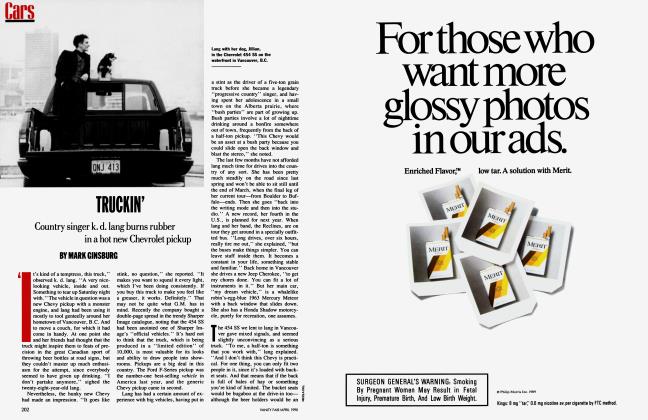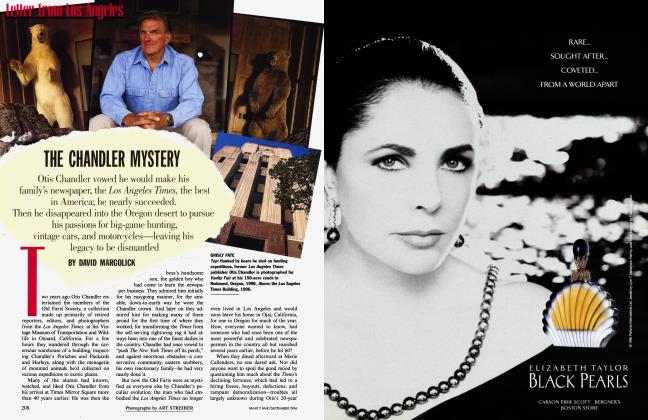Sign In to Your Account
Subscribers have complete access to the archive.
Sign In Not a Subscriber?Join NowVOLKSWAGEN'S BOSSA NOVA
Cars
Antonio Carlos Jobim cruises the young and lovely VW Fox
MARK GINSBURG
'You may wonder why a guy like me drives a Fox," remarked Antonio Carlos Jobim, the Brazilian singersongwriter-composer of some of the world's most popular tunes—including, most popular of all, ''The Girl from Ipanema." "I'm famous, yes," said Jobim, "but I'm not very rich, and in Rio the Fox is a fairly upper-middle-class car, when purchased new—not exactly the people's car anymore. I paid more for mine than you do here. Actually I bought two of them. My wife drives the wagon version." Volkswagen manufactures the Fox in Sao Paulo, where labor is cheap and the car factories are modem. The price is kept low in the U.S., but in Brazil a huge, punishing tax is tacked on.
Twenty-eight years after Jobim sold off his early hits, the rights are reverting back to him, and with the money a Manhattan apartment has been bought. In the near future, once everyone has settled in, a car will be purchased for the family's New York life; perhaps it will be a Fox, though Ana, Jobim's wife, prefers her wagon version to the four-door sedan Jobim was testing for us. "I can put everything in it," she says. "I have the stroller for the baby now, and toys for the kids, and the nanny goes with us, too. This model is too small for all of that. Plus I have to buy a lot of bulky things for the apartment." The Fox GL Wagon is the only two-door wagon sold in the U.S., and it's cute. Though, in all fairness, the four-door sedan does have a good-sized trunk, and a full-size spare tire that doesn't have to be inflated, which is a rarity in subcompact cars.
The car is small, but tough. "You know, it's given me no trouble at all in Brazil—none," said Jobim. "I've had four VWs since my first car, a Beetle that I bought in 1959, and I take them way up to our house in Po§o Fundo, in the mountains. I think the German quality controllers must be watching the Paulista factory workers like hawks." They do, and Volkswagen of Brazil is considered one of VW's top plants outside Germany. Everything on this car works. "The gearshift mechanism is very smooth, very crisp, and very rhythmic," notea Jobim as we stopped and started our way up Madison Avenue. "The shifts are well placed; when you need second gear, it's there, or third or fourth—always at the correct speed." VWs are rewarding to drive vigorously because of their tight transmissions and sporty exhaust notes. After years of exposure to mushy Japanese gearboxes, it was a pleasure for me to discover that a cheap car could be fun to shift. (Volkswagen doesn't plan to produce automatic Foxes for another year or so. The car was designed to be sold in Brazil, and the U.S. market was an afterthought. So the curious American penchant for automatic transmissions will not be satisfied for the moment.)
Anyone who has been to Brazil can attest to the astonishing durability of Brazilian cars. The country has only 50,000 miles of paved roads; the rest are dirt or gravel. And Brazilians never hesitate to take their cars anywhere—if there's no road, they'll make one. In Rio, the same holds true for parking. Spaces that don't exist are created by getting out and pushing two cars apart, with the aid of one of the guys who stand around just for this purpose, waiting to pick up a few cruzadoes. The space is then lengthened by backing into the car behind, which will in turn hit the car lying behind it, causing a domino effect; parking brakes are never used except on steep hills. Curbs are to be driven over, as are sidewalks, and U-turns are routinely executed by driving up and over the median well before the turnaround, normally a job for a Bronco II or a Jeep Cherokee. But the cars, all small, seem to take it—for about five years, at which point they need to be overhauled. (The real moment of horror comes after sundown, when it's permissible to run red lights in Rio because stopping at intersections encourages robbers.) In Manhattan, our Fox didn't seem to mind the craters that pass for potholes. Remarkably, the wheel alignment remained intact and the ride was never choppy.
The interior of the Fox, redesigned for the U.S. by Giorgetto Giugiaro's Ital Design firm in Turin, is as attractive and hardy as the exterior. The checked velour upholstery is tasteful and seems durable, and the Fox GL doesn't appear plasticky, apart from a few of the buttons on the instrument panel. No body-colored steel is exposed inside the car, and every surface is padded or covered; even the floor is fully carpeted. The controls work well and are logically placed, for the most part.
We couldn't test the airconditioning on our car (it was cold outside), but the vent system quickly revealed its Brazilian origins, blowing two extremes—hot or cold, with little compromise.
"Getting in and out of this car is going to be a problem—a preoccupation, rather—for American six-footers," observed Jobim, re-entering the Fox after some shopping. "You have to take care not to hit your head. And the grab handle that pokes out makes it more awkward still; we should notify the Brazilian authorities about that. There's not too much space in the backseat, and for a big American guy it's going to be cramped here in front too, but for me it's fine. The seat is very comfortable. But then, American cars seem like luxury bathtubs; you don't drive them, you navigate them. I had four Brazilian-made Dodge Darts in succession. The last one was called Moby-Dick because it was a white whale and had a wound in the rear fender."
Once everyone is tucked inside the car, the Fox holds its own. On the open road the car is perfectly pleasant to drive at 75 m.p.h. or even 80. Wind noise intrudes only slightly, although the car's body isn't terrifically aerodynamic and is therefore subject to wind shifts and currents. "But I don't want to race on the highway," Jobim pointed out. "I like it that the car doesn't carry extra weight. It's agile and maneuverable, manobrdvel, and in Rio you have to be able to do things fast. The Brazilians are very nice until they get behind the wheel; then the fangs start to appear. Sometimes the personal frustration created by economic problems makes guys go crazy, and they get mad at the car to compensate. The driving here in New York seems much more sound—less reckless, less rancorous, than in Rio. Anyway, around the block, in the brush, in the asphalt jungle, I'll take the Fox."
The car comes in three versions: the two-door sedan, the four-door GL sedan, and the GL Wagon. It's cheap, efficient, fun to drive, and never needs to be pampered. Our sedan started immediately after having been left out in freezing temperatures, and handled capably in the snow. One assumes that this Brazilian, road-tested throughout the world, is going to flourish in tropical heat waves too. The Fox doesn't have the striking looks of its predecessor, the Beetle, but on the road the car's lively personality emerges, and it will surely push around the Nissans and Hyundais that crowd the market. Its price makes it almost irresistible.
MANUFACTURER'S SPECIFICATIONS:
Volkswagen Fox GL Sedan
• Vehicle type: front-wheel-drive four-passenger four-door sedan.
• Price: $7,280. (A two-door sedan is available for $6,290, and a two-door GL Wagon for $7,380.)
• Options: metallic paint, air-conditioning, AM/FM stereo cassette player.
• Engine type: four-cylinder, single-overhead-cam, in-line, water-cooled.
• Transmission: four-speed manual only.
• Acceleration 0—60 m.p.h.: 11.5 seconds.
• Top speed: 99 m.p.h.
• Projected E.PA. fuel economy: 25 m.p.g., city; 30 m.p.g., highway.
 View Full Issue
View Full Issue


















Subscribers have complete access to the archive.
Sign In Not a Subscriber?Join Now